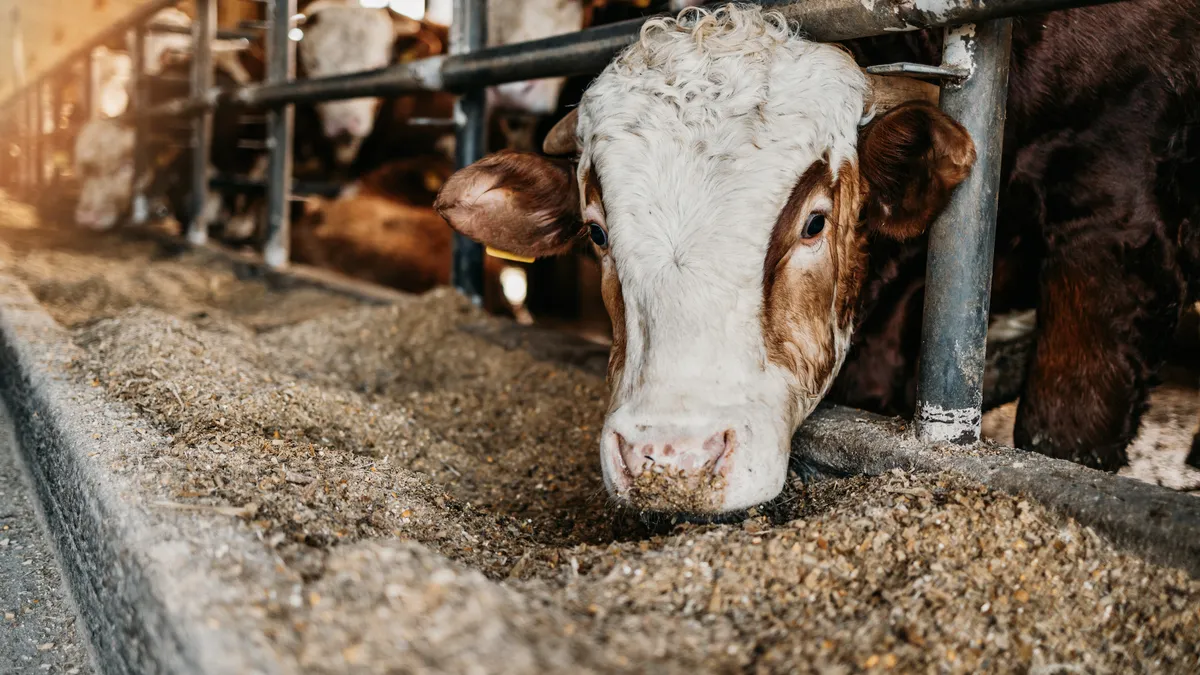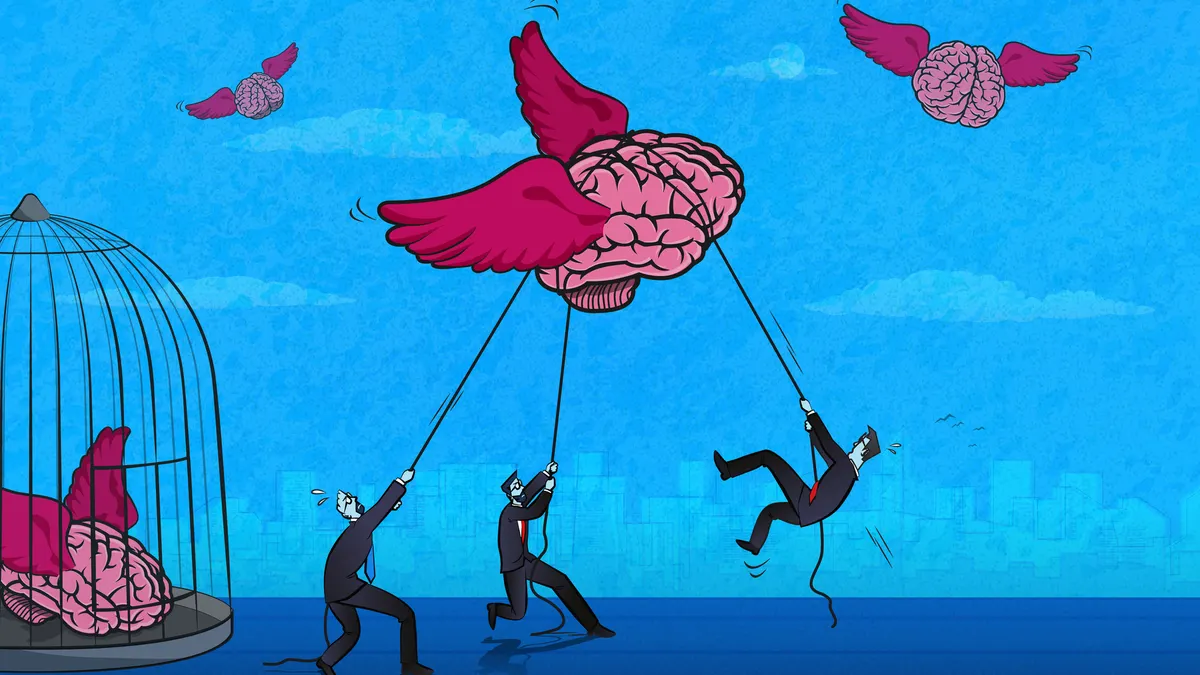Health officials recorded the second-ever human case of the H5N1 influenza strain in Texas last April. Since then, scientists and regulators have moved quickly to contain a potential outbreak. But amid the flurry of studies and detection efforts, the virus has presented mysteries at every turn.
The cows were the first surprise.
H5N1 — a type of influenza A — has been detected in animals around the world since the 90s. The virus primarily infects birds, including wild birds and farmed poultry, but nearly 50 different types of mammals have also contracted the virus.
Cows, however, are not the usual H5N1 suspects. Not only do they generally not eat birds, but because cows are typically not hosts for influenza A viruses, researchers are still trying to understand why H5N1 is spreading in cattle.
Since the virus was first detected in Texan dairy cattle last March, the USDA and HHS have found infections in 46 herds across nine states. And the bird flu seems to move quietly through cattle herds, barely making them sick, which could make viral transmission more difficult to track.
In humans, the impact could be much more dramatic.
Of the 888 cases of H5N1 in humans that have been recorded globally since 2003, 463 cases — over half — were fatal, according to the WHO. But because many milder cases were likely not recorded in that data, the exact fatality rate is still unclear.
The only two reported cases in the U.S. — including one in 2022, which the CDC suspects stemmed from contact with an infected bird, and now the first-ever mammal-to-human case in Texas when a farm worker likely contracted the virus from a cattle — both involved mild symptoms.
The CDC currently classifies the threat of a wider spread to humans as “low.”
Still, earlier this month, FDA Commissioner Dr. Robert Califf stressed to the Senate Appropriations Agriculture Committee that there are plenty of reasons to be on high alert, suggesting the mortality rate could be as high as 25% in humans — 10 times worse than COVID-19.
“This virus, like all viruses, is mutating,” Califf said. “We need to continue to prepare for the possibility that it might jump to humans.”
While the USDA tracks the outbreak in animals, CDC officials have launched a dashboard to communicate any new cases in humans. The agency is also receiving data from 600 sites testing wastewater for the presence of H5N1.
Separately, an academic team from Emory University and Stanford University recently released results from 190 wastewater treatment sites that found influenza A at 59 locations.
The FDA, meanwhile, has focused its efforts on protecting the food supply and plotting a pharma-related response to a potential human outbreak.
With all these efforts kicked into high gear, here are some of the chief concerns.
The raw milk factor
Although FDA testing of pasteurized milk uncovered genetic traces of H5N1 in 1 in 5 samples, no live virus has turned up so far, and the agency has maintained that milk is generally safe. The larger concern over potential viral transmission from food to humans involves unpasteurized milk.
“Because of the limited information available about the possible transmission of H5N1 virus via raw milk, the FDA continues to recommend that industry does not manufacture or sell raw milk or raw milk products, including raw milk cheese, made with milk from cows showing symptoms of illness, including those infected with avian influenza viruses or exposed to those infected with avian influenza viruses,” the FDA stated.
Still, raw milk enthusiasts have been pushing back against those worries. With social media influencers doubling down on its potential health benefits and some stoking anti-government fears, weekly sales of raw milk have skyrocketed by 21% to 65% each week since March 25, according to reports from the Associated Press.
In April, the USDA stated that although it is “unclear exactly how the virus moves around, the virus is shed in milk at high concentrations.”
The CDC has long linked raw milk to a range of foodborne illnesses including Salmonella and E. coli.
Maintaining regulator momentum
Public health experts have derided lawmakers in recent years for failing to pass legislation, such as the Pandemic and All Hazards Preparedness Act, that could keep biosecurity momentum going.
But when Califf sat before a Senate appropriations committee recently and introduced the FDA’s $7.2 billion budget request for 2025 — a $341 million increase over fiscal year 2024 — lawmakers in attendance greeted him warmly and expressed interest in maintaining adequate levels of FDA funding, especially to combat H5N1.
Various agencies are currently involved in the response. As Califf pointed out, USDA regulates the cattle, CDC protects workers and FDA regulates milk and works with HHS on medical countermeasures. But even if lawmakers keep their coffers full, these disparate wings of the government face multiple challenges.
Califf noted in his testimony that government agencies have struggled at times to get access to farms for monitoring and detection efforts because farmers are “understandably” protective of where they work.
And although Califf said the agencies hold frequent calls to coordinate their work, recent reporting by STAT News suggested that “turf battles” between the USDA and FDA could hamper the government’s response to H5N1.
The FDA has also been hustling to prepare a pharma-related response, Califf said, pointing out that they need to have testing, antivirals and vaccines ready to go.
The CDC reported in April that “the virus is very closely related to two existing HPAI A(H5N1) candidate vaccine viruses that are already available to manufacturers, and which could be used to make vaccine if needed.”
The virus’ peculiar behavior
Scientists around the world have been hustling to unravel several mysteries surrounding H5N1.
For example, it’s still uncertain how exactly the virus jumped to cows.
In one study that was recently published — but hasn’t been peer reviewed — researchers examined the multiple ports of entry cows have for human and avian viruses. Importantly, the study showed that cows have more receptors for avian viruses in mammary glands than in other parts of the body, which could explain why so much of the virus ends up in milk even though the cows aren’t getting very sick. But there was no explanation for how the virus gets into udders. The authors also worryingly noted that cows could become a breeding ground for mixing human and avian viruses — leading to new types of influenza.
Other characteristics of the virus also remain baffling.
Although avian flus often trigger outbreaks and then fade away, H5N1 appears to be more durable and has been successfully circulating the world longer and on a larger scale than other strains of influenza.
Scientists are also still in the dark about the likelihood of human-to-human transmission. In a recent interview, the director of Stanford’s Center for Innovation in Global Health, Dr. Michele Barry, said scientists currently lack the necessary data to understand transmission and that, in the case of the dairy worker who caught H5N1 from a cow in Texas, researchers hadn’t performed serological testing.

















